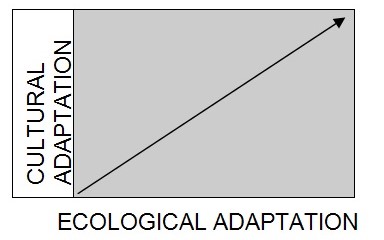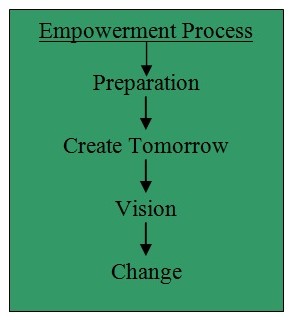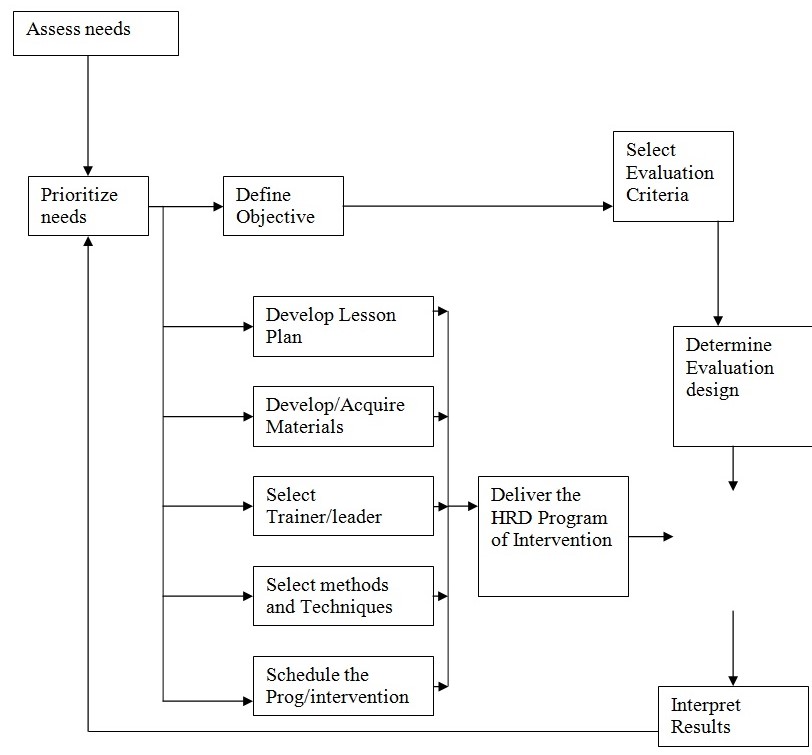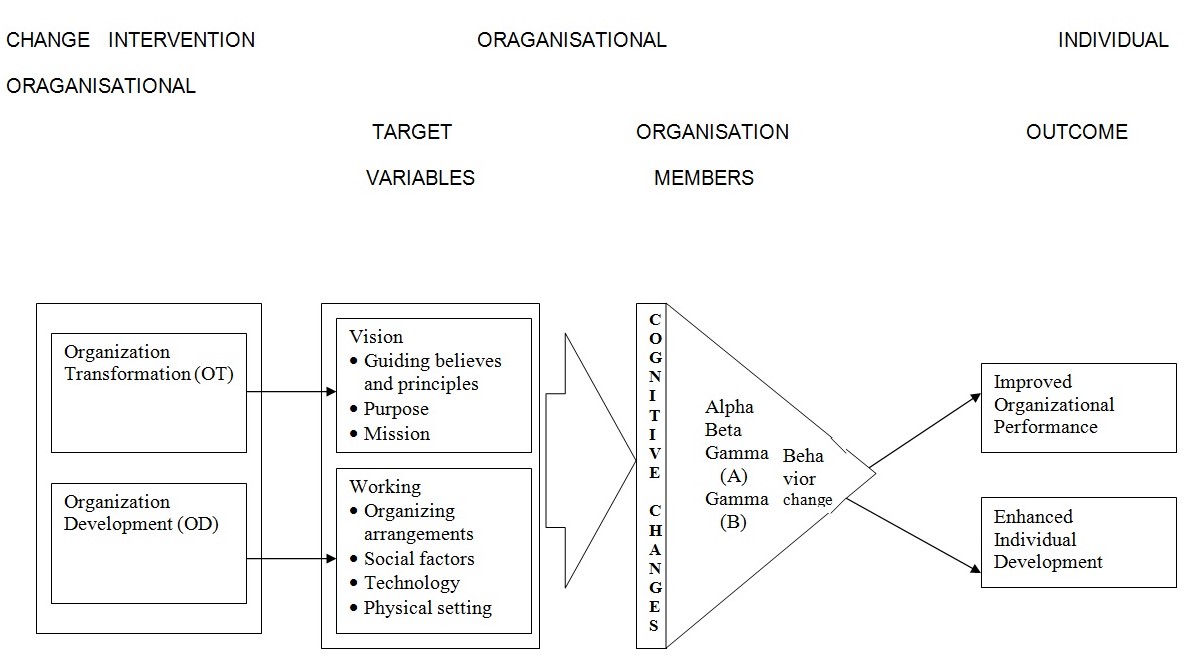Importance of Managing People in a Global Context
In the era of Globalization, Companies try to differentiate themselves mostly through the labor force as imitation is very minimal in this case. This illustrates the importance of managing a workforce. Employees contribute directly to Organizational Development and change is the permanent thing nowadays and making employees adapt to changes is a real challenge for Human Resource Managers.
Organizational Development
At the core of Organizational Development is the concept of an organization, defined as two or more people working together toward one or more shared goals. Development in this context is the notion that an organization may become more effective over time at achieving its goals.
“OD is a long-range effort to improve organization’s problem solving and renewal processes, particularly through more effective and collaborative management of organization culture-with specific emphasis on the culture of formal work teams-with the assistance of a change agent or catalyst and the use of the theory and technology of applied behavioral science including action research.”
Kurt Lewin (1898 – 1947) is widely recognized as the founding father of OD, although he died before the concept became current in the mid-1950s. From Lewin came the ideas of group dynamics, and action research which underpins the basic OD process as well as providing its collaborative consultant/client ethos. Institutionally, Lewin founded the Research Center for Group Dynamics at MIT, which moved to Michigan after his death. RCGD colleagues were among those who founded the National Training Laboratories (NTL), from which the T-group and group-based OD emerged. In the UK, working as close as was possible with Lewin and his colleagues, the Tavistock Institute of Human Relations was important in developing systems theories. Important too was the joint TIHR journal Human Relations, although nowadays the Journal of Applied Behavioral Sciences is seen as the leading OD journal.
Change management
Change management can take many forms and include many change environments. The most common usage of the term refers to organizational change management.
Organizational change management is the process of developing a planned approach to change in an organization. Typically the objective is to maximize the collective benefits for all people involved in the change and minimize the risk of failure of implementing the change. The discipline of change management deals primarily with the human aspect of change and is therefore related to pure and industrial psychology.
Many technical disciplines (for example Information technology) have developed similar approaches to formally control the process of making changes to environments.
Change management can be either ‘reactive’, in which case management is responding to changes in the macroenvironment (that is, the source of the change is external), or proactive, in which case management is initiating the change to achieve the desired goal (that is, the source of the change is internal). Change management can be conducted continuously, on a regular schedule (such as an annual review), or when deemed necessary on a program-by-program basis.
Change management can be approached from several angles and applied to numerous organizational processes. Its most common uses are in information technology management, strategic management, and process management. To be effective, change management should be multi-disciplinary, touching all aspects of the organization. However, at its core, implementing new procedures, technologies, and overcoming resistance to change are fundamentally human resource management issues.
The psychology of change
Attitudes towards change result from a complex interplay of emotions and cognitive processes. Because of this complexity, everyone reacts to change differently. On the positive side, change is seen as akin to opportunity, rejuvenation, progress, innovation, and growth. But just as legitimately, change can also be seen as akin to instability, upheaval, unpredictability, threat, and disorientation. Whether employees perceive change with fear, anxiety, and demoralization, or excitement and confidence, or somewhere in between, depends partially on the individual’s psychological makeup, partially on management’s actions, and partially on the specific nature of the change.
An early model of change developed by Kurt Lewin (1951) described the change as a three-stage process. The first stage he called “unfreezing”. It involved overcoming inertia and dismantling the existing “mindset”. Defense mechanisms have to be bypassed. In the second stage, the change occurs. This is typically a period of confusion. We are aware that the old ways are being challenged but we do not have a clear picture to replace them with yet. The third and final stage he called “refreezing”. The new mindset is crystallizing and one’s comfort level is returning to previous levels.
The ADKAR model developed by Jeff Hiatt (1998, 2006 for individual change management presents five building blocks that an individual must obtain to realize change successfully. These include awareness, desire, knowledge, ability, and reinforcement. It is management’s job to create an environment in which people can go through these stages as quickly as possible, including:
- Building awareness of why the change is needed.
- Creating a desire to support and participate in the change.
- Developing knowledge of how to change.
- Fostering the ability to implement new skills and behaviors.
- Providing reinforcements to sustain the change.
Schools and Concepts of Change Management
Organizations are ruled by laws of complexity (The systemic/complexity principle) Emerging evidence from systems thinking and complexity science indicates that large systems show a different behavior from their single parts. System theory talks about organizations as “non-trivial machines” (like the human body, etc.), whose behavior cannot be predicted or calculated by a computer. These new sciences are applied to organizational development and change, for example in Appreciative Inquiry, Open Space Technology, Systemic Constellations, etc.
We are living in a field that is a whole (The quantum principle) Most of our day-to-day assumptions are still based on classical Newtonian mechanics, which usually are applied to working with organizations. For example, most people would assume that if A is true, B is false. There is a growing number of thinkers who relate the change in organizations to Quantum Mechanics, which teaches us that if A is true, B is equally true – just another side of the coin -, and that A could not exist without B. Observers (or consultants, or leaders) are always part of a field, which they influence but by which they have influenced themselves instantly.
Some examples for the application of Quantum Mechanics to Change Management: – Process Oriented Psychology by Arnold Mindell, talks about the field in which each human relationship exists. Its application field, Worldwork, intends to transform systems by shifting roles that people unconsciously hold in a system. – Dialogue (by David Bohm) is a new form of communication in large groups which is based on the suspension of assumptions, thus letting the common knowledge of ‘container’ emerge. – Appreciative Inquiry, one of the most frequently applied approaches to organizational change, is partly based on the assumption that change in a system is instantaneously (‘Change at the Speed of Imagination’).
Key Concepts
Below are several well-known concepts in which the Change Management practice is rooted. There is some overlapping in these concepts and their practice, the tools derived from these ideas are often used interchangeably.
- Process Oriented Psychology.
- Theme Centred Interaction (Ruth Cohn).
- Transactional Analysis.
- Systems Thinking / Family Therapy (Virginia Satir and all the new thinkers, including Bert Hellinger, Fritz Simon, etc.)
- Neurolinguistic Programming (Richard Bandler, John Grinder, Robert Dilts).
- Communication Theory (Paul Watzlawik).
- Whole Systems Change (Harrison Owen, Marvi Weisbord, and others).
- Total Quality Management.
- ADKAR (a model used in Change management that connects organizational change management to individual change management).
- Change Management Excellence: Putting NLP to Work (Martin Roberts Ph.D.).
Formula for Change
The Formula for Change was developed by Richard Beckhard and David Gleicher and is sometimes referred to as Gleicher’s Formula. The Formula illustrates that the combination of organizational dissatisfaction, vision for the future and the possibility of immediate, tactical action must be stronger than the resistance within the organization for meaningful changes to occur.
Management’s role
Management’s first responsibility is to detect trends in the macroenvironment to be able to identify changes and initiate programs. It is also important to estimate what impact a change will likely have on employee behavior patterns, work processes, technological requirements, and motivation. Management must assess what employee reactions will be and craft a change program that will provide support as workers go through the process of accepting change. The program must then be implemented, disseminated throughout the organization, monitored for effectiveness, and adjusted where necessary.
In general terms, a change program should:
- Describe the change process to all people involved and explain the reasons why the changes are occurring. The information should be complete, unbiased, reliable, transparent, and timely.
- Be designed to effectively implement the change while being aligned with organizational objectives, macroenvironmental trends, and employee perceptions and feelings.
- Provide support to employees as they deal with the change, and wherever possible involve the employees directly in the change process itself.
- Be consistently monitored and reviewed for effectiveness. A successful change management project is typically also a flexible project.
By following the above-said theories and models, the management could equip themselves in bringing the change. Other OD Interventions to follow in bringing a change are:
- Techno Structural Intervention.
- Human processual Intervention.
- Societal Intervention.
- Socio-Technical Intervention.
Major Functions of HRM
The major functions of HRM include:
- Staffing Policy.
- Management Training and development.
- Performance Appraisal.
- Compensation Policy.
Staffing Policy
A Staffing Policy is a crucial decision to be made. As per this policy, all the key positions will be handled by the host nation employees and the ancillary positions to be occupied by the home nationals or vice versa. An HR Manager must decide on the type of staffing policy for the company’s global operations and managing expatriates.
An Expatriate manager is a citizen of one country who is working abroad in one of the firm’s subsidiaries. The types of staffing policies are
The Ethnocentric Approach
An Ethnocentric staffing policy is one in which all key management positions are occupied by parent country nationals. Firms pursue this policy for three reasons. First, the Firm may believe the host country lacks qualified engineers to fill senior management positions. Second, the firm may see this policy as the best way of maintaining the corporate culture. Many Japanese firms prefer their foreign operations to be headed by expatriate Japanese managers because managers will have been socialized into the firm culture while employed in Japan. Third, if the firm is trying to create value by transferring core competencies to a foreign operation, it may believe that the best way to do this is to transfer parent country nationals who know that competency to the foreign operation.
The Polycentric Approach
A Polycentric Staffing policy requires host country nationals to be recruited to manage subsidiaries, while parent country nationals will occupy key positions at corporate headquarters. One advantage of adopting this approach is that the firm is less likely to suffer from cultural myopia. The second is that this policy is less expensive to implement, reducing the costs of value creation.
The Geocentric Approach
A geocentric staffing policy seeks the best people for key jobs throughout the organization, regardless of nationality. This enables the firm to make the best use of human resources.
The issue here lies in deciding on which of the above approaches to adopt in the Global scenario. This is a challenge and managing expatriates is yet another challenge in the diverse workforce.
The following table summarizes the types of staffing policy with advantages and disadvantages of each type.
Comparison of Staffing Approaches.
Managing Diverse Workforce (Expatriates)
The ecological adaptations and cultural shifts are two important areas for any organization to focus on while making their business global. Flora and fauna for survival have to ecologically adapt while human beings believed in cultural adaptation as a pre-requisite for global sustenance. These two factors can be graphically expressed and the diagonal progression would be the added advantage for the global organization.
The following model will give an illustration of how the problem of ecological and cultural adaptation can be solved.

James Belasco’s Model
He identified three methods by which cultural change has been brought into the minds of employees. In his book “Teaching the Elephant to Dance” he narrated how the leaders of global business reap extraordinary gains by empowering employees. According to him
- only mammoth changes will keep the organizations viable in the future;
- people will not naturally embrace the required changes and
- empowerment is the key to involve people in the change process.
He suggested a four-step model explain the empowerment process; preparation, create tomorrow, vision, and change.

Culture strongly influences employee empowerment. Empowerment requires information sharing. Normally in a high echelon group, the managers are not willing to share the information. In a culture that is high in individualism, people tend to think and act as individuals. They are unwilling to cooperate and share information. Empowerment can be successful in a culture that is high in collectivism wherein people tend to think of themselves as group members. They are comfortable with the day-to-day communication of teamwork and collaborate freely. Moreover, people feel that greater information sharing would reduce uncertainty about their risk.
To conclude for any person, product, process, or service has to ecologically and culturally adapt to become globally sustainable. So these two factors must be considered while recruiting individuals. Any uni-lateral adaptation may not help to achieve the desired goal. Diversities are natural phenomena and one has to uphold personal esteem to overcome the differences and to be convergent of the individual capabilities. So, by adopting the above model of culture and Ecological adaptation, the failure of expatriates will be eliminated.
Training Model and Performance appraisal
The following Training model can be adapted to bring a change in the attitude of the employees and since the job pertains to sales to a great extent, the “Pay for performance” or “PPP” Method of performance appraisal could be adopted. This method should be combined with 360-degree feedback appraisal to ensure control over the performance appraisal technique. The Unions also must be brought in to agree with the performance standards set.

Sales Training Model. Source: HRD by Desimone.
Evaluation of Training and Performance appraisal
Training can be evaluated based on the change that has been brought into the thoughts and behavior of employees as a result of Training. So Organization development on a whole as a result of employee development must be the main focus.
The following model could be used to evaluate the training. The model checks for behavior change and attitude change as a result of training and is considered the most appropriate model for evaluating a training program.
The model considers both individual and organizational factors contributing to change in behavior of an individual. Alpha change is the change against the environment. This is a period where all forces against change are eliminated and the employee starts accepting the training needs.
Beta and gamma changes are characterized by an attitude change and the employee becomes fully involved in the training program.
Finally, a Behavior change indicates that the employee has become a great asset to the organization. This stage is characterized by high involvement and employee empowerment and the employee becomes a brand ambassador of the company.

Organizational Example – HSBC Bank Plc – Managing in a Global Context
About HSBC Bank plc
HSBC Bank plc is incorporated in England and Wales and established at 8 Canada Square, London E14 5HQ which is its Registered Office. HSBC Bank plc is regulated by the Financial Services Authority and is registered in the Financial Services Authority Register with the following Registration Number: 114216. HSBC Bank plc’s registered VAT Number is GB 365684514 and its Company Register Number is 14259.
HSBC Bank plc is one of the major clearing banks in the United Kingdom. The business ranges from the traditional High Street roles of personal finance and commercial banking to private banking, consumer finance as well as corporate and investment banking. Across all brands, the bank operates some 1800 sites in the UK.
HSBC Bank plc Human resource
HSBC Bank plc houses some 8,000 staff over 45 levels. Their main business areas include Home, Retail, Customer contact centers, Wealth management, Customer Services delivery, Commercial and Graduates.
HSBC Bank plc recruitment process
Once the role and location to apply are selected, you’ll be guided through the following process:
- Initial suitability. A series of questions will be asked (such as your eligibility to work in the UK).
- Online application form. Complete the application form as prescribed with appropriate information.
- Credit Check. Once the application form has been received, a credit check will be undertaken. This check will include CCJs, bankruptcy, and delinquent debts registered (e.g. defaulted on payments to a loan that has not yet been paid in full.) Full details on this are contained within the application form.
- Profiling questionnaire. This is the next stage and is undertaken online. Typically, instructions will be received on how to complete this questionnaire within 5 days from your initial submission of the application. The Experienced Commercial Relationship Manager applicants will also receive instructions on how to complete verbal and numeric reasoning tests, which are part of the assessment process for this role.
- Telephone interview. A 30 to 40-minute telephone interview based on key skills for the role applied will be conducted. This is a competency-based interview and the applicant will need to talk through situations for the displayed particular skills. The key skills for each Customer Sales role are sales, customer service, teamwork, work standards, and communication. For the Management roles, the key skills are sales/retail management, relationship building, leadership/team management, customer service, drive, resilience, and communication.
- Face-to-face interview. The final stage is conducted by the recruiting manager, typically at the location for the role applied for. Again the interview will focus on the applicant’s skills and experiences and how they match with Bank’s requirements. There will also be a chance for an applicant to ask any questions. The applicant will be advised of the Bank’s decision within 7 days of the interview. If the applicant is successful, the applicant will be invited to join an initial induction course that will tell the applicant to get started.
Referencing
All Bank offers will be subject to satisfactory pre-employment references. Whilst Bank is preparing the applicant’s contract and terms and conditions of employment, the bank will progress obtaining references.
Employee Benefits
From day one, Bank will provide the training and opportunities to develop employees’ portfolios (and employees’ rewards) in a way that maximizes employees’ true potential.
Benefits include:
- Excellent salary – details for each role are provided as part of our job search facility.
- Participation in a bonus incentive scheme that can add 30% to your salary.
- Participation in our share ownership schemes.
- Contributory pension scheme.
- Preferential loans and discounts on a range of our products.
- Mortgage subsidy.
- Holidays – Clerical roles, up to 33 days including bank holidays. Managerial roles up to 30 days plus bank holidays.
- Death in service benefit of 4 times your salary.
- For managers, BUPA healthcare.
- Cars or car allowance for certain roles.
- Participation in the HSBC Childcare Scheme, which includes discounted nursery places within over 400 selected nurseries across the country, plus tax and NI savings on the cost of your childcare fees paid for children up to age 16.
For Example, The starting salary for an Executive Management trainee is £25,000, with a joining bonus of £4,000. Participation in the bank’s incentive scheme could give you an additional payment of up to 30% of your salary. Benefits include private medical cover, contributory pension scheme, and preferential rates on various HSBC Bank products.
Training and factors impacting on the choice of training methods
Training – Definition
Training refers to the acquisition of knowledge, skills, and competencies as a result of the teaching of vocational or practical skills and knowledge that relates to specific useful skills.
Training and Development is the field concerned with workplace learning to improve performance. Such training can be generally categorized as on-the-job or off-the-job. On-the-job describes training that is given in a normal working situation, using the actual tools, equipment, documents, or materials that they will use when fully trained. On-the-job training is usually most effective for vocational work. Off-the-job training takes place away from a normal work situation which means that the employee is not regarded as a productive worker when training is taking place. An advantage of off-the-job training is that it allows people to get away from work and concentrate on the training being given. This is most effective for training concepts and ideas.
Factors impacting on the choice of training methods:
- Make Vs Buy Decision: Here the decision on who is to conduct training is decided. i.e whether to hire an expert from outside or use an employee within the organization.
- Employee Work timings.
- Employee attitude.
- Management influence and attitude.
- Training Budget.
- Forecasted projects and employee requirements.
- Changing Environment.
- New technologies.
References
Jeanne Brett, Kristin Behfar and Mary C. Kern. 2006. Managing Multi Cultural teams: Harvard Business Review South Asia.
Merril Ewert D and Jennifer A King Rice. 2002. Managing Diversity: HRM Review.
Garry Dessler, 2004, 10th edition, Eastern Economy edition. Human Resource Management.
Stephen P. Robbins, 2002, Prentice Hall of India, Organizational Behavior.
Randy L. Desimone, Jon M. Werner and David M. Harris. Pearson education.Human Resource Development.
Hill, Charles, 2005, 5th edition, Tata Mcgraw Hill, International Business – Competing in the global market place.
HSBC Employers Handbook.
